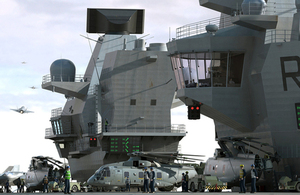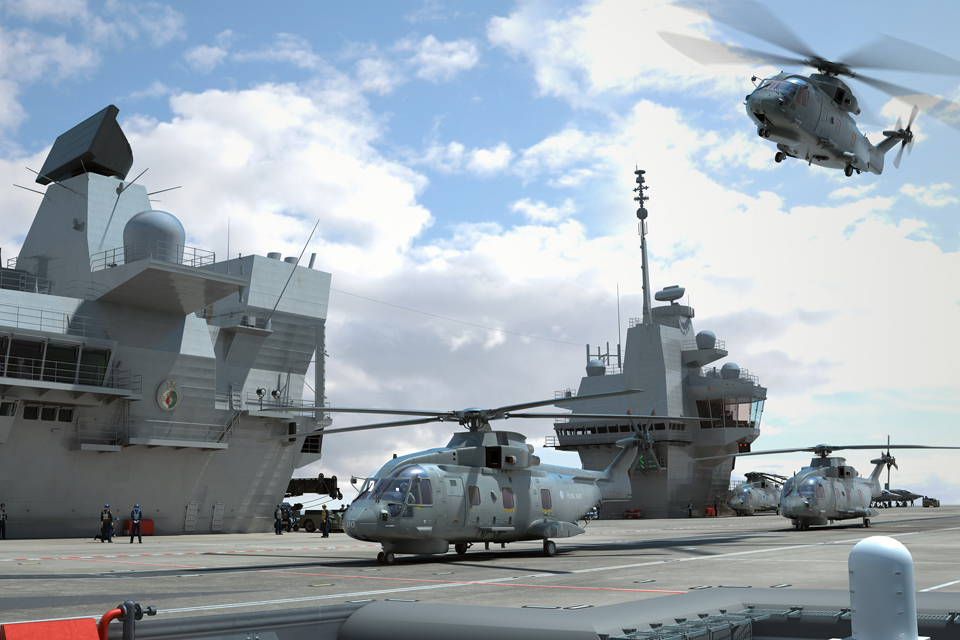New surveillance system for Royal Navy aircraft carriers
Queen Elizabeth Class aircraft carriers will get helicopter-borne early warning systems 18 months earlier than planned, saving £22 million.

Computer-generated image of flight deck operations on the aircraft carrier HMS Queen Elizabeth [Picture: Copyright Aircraft Carrier Alliance]
Following renegotiation of the aircraft carrier contract to deliver savings to the taxpayer, the Defence Secretary has accelerated the Crowsnest airborne surveillance and control programme to ensure it is operational by 2019.
Using high-power radar to provide long-range air, maritime and land tracking capabilities, Crowsnest will be an integral part of future carrier operations. It will be fitted to the Royal Navy’s fleet of upgraded Merlin Mk2 helicopters, including those to be embarked on the Queen Elizabeth Class carriers.
The decision to bring forward the Crowsnest programme has been made as part of the annual review of MOD’s 10-year equipment plan. The plan, worth £160 billion, includes unallocated funding to support equipment requirements that may arise as threats emerge or priorities change.

Computer-generated image of Merlin helicopters operating from a Queen Elizabeth Class aircraft carrier [Picture: Copyright Aircraft Carrier Alliance]
The shorter delivery time for Crowsnest will lead to a significant reduction in costs, as specialist industry personnel will be required for a shorter period of time.
Defence Secretary Philip Hammond said:
Crowsnest will provide vital surveillance and intelligence to protect the Queen Elizabeth Class aircraft carriers.
The introduction of Crowsnest 18 months early will ensure HMS Queen Elizabeth has the full range of capabilities when it enters service.
Lockheed Martin UK, which designs the Merlin helicopters, has been awarded a £24 million contract to run a competition to design, develop and demonstrate Crowsnest.